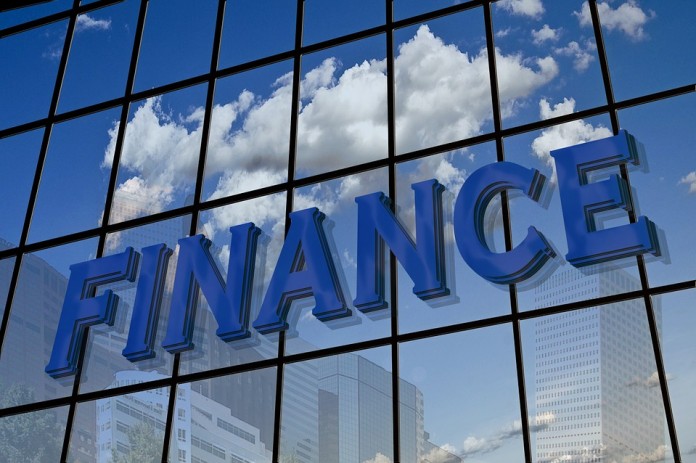This article is written by Ameya Phadtare pursuing a Diploma in Technology Law, Fintech Regulations and Technology Contracts. This article has been edited by Zigishu (Associate, Lawsikho).
This article has been published by Sneha Mahawar.
Table of Contents
Introduction
Your money is kept by banks; businesses whose primary objective is to earn money through centralized finance. Third parties who enable money flow between parties abound in the financial system, each demanding a charge for their services. Let’s assume you used your credit card to buy a gallon of milk. The charge is sent from the merchant to an acquiring bank, which then sends the card information to the credit card network.
The network cancels the charge and asks your bank for payment. Your bank approves the charge and transmits it to the network, which then delivers it back to the merchant via the acquiring bank. Each link in the chain is compensated for its services, mostly because merchants must pay for your ability to utilize their services.
All other financial activities are costly; loan applications might take days to process; and you may not be able to use a bank’s services while abroad.
Meaning of Decentralized Finance
Decentralized finance, or DeFi, refers to a financial system that functions without the need of traditional, centralized middlemen. We’re accustomed to everything passing via a bank or other financial organizations such as a worldwide exchange, but DeFi establishes a self-contained system. Online transactions using DeFi coin are perhaps the most well-known use of decentralized finance, but they also allow us to manage a variety of financial applications like investing, insurance, trading, borrowing, and lending in a more efficient and transparent manner. By allowing consumers, merchants, and corporations to perform financial transactions using developing technologies, decentralized finance removes intermediaries. Peer-to-peer financial networks that employ security protocols, connectivity, software, and hardware developments are used to achieve this.
You may lend, trade, and borrow using software that records and validates financial transactions in distributed financial databases from anywhere you have an internet connection. A distributed database is accessible from several places; it collects and aggregates data from all users and verifies it with the help of a consensus process.
Decentralized finance uses this technology to abolish centralized finance models by allowing anybody, regardless of who or where they are, to access financial services. Through personal wallets and trade services tailored to people, DeFi apps provide users more control over their money.
How does decentralized finance work
DeFi, rather than a bank, employs technology to facilitate transactions and services between parties. Along with public blockchains, a variety of open-source protocols are being created, establishing a foundation for decentralized finance to function on.
Blockchain technology, which is also used in cryptocurrencies, is used in decentralized finance. A distributed and secure database or ledger is referred to as a blockchain. Decentralized applications are the applications that conduct transactions and run the blockchain.
Transactions are stored in blocks on the blockchain and subsequently validated by other users. If all of the verifiers agree on a transaction, the block is closed and encrypted, and a new block is generated containing information from the preceding block.
The information in each subsequent block “chains” the blocks together, giving the blockchain its name. There is no method to edit a blockchain since information in prior blocks cannot be modified without impacting subsequent blocks. The safety aspect of a blockchain is provided by this notion, as well as other security mechanisms.
Here are some of the current ways that people are interacting with DeFi: –
Lending
Rather than earning interest and incentives once a month, lend out your crypto and earn interest and rewards every minute.
Obtaining a loan
Instantly obtain a loan without the need to complete out paperwork, even extremely short-term “flash loans” that traditional financial institutions cannot provide.
Trading
Make peer-to-peer crypto asset trades as if you were buying and selling stocks without using a brokerage.
Saving for the future
Invest part of your cryptocurrency in alternative savings accounts to earn higher interest rates than you’d obtain from a bank.
Purchasing derivatives
It entails placing long or short wagers on certain assets. Consider them the cryptocurrency equivalents of stock options or futures contracts.
Main Elements of DeFi
DeFi “building blocks” are used to construct a software stack, with each layer building on top of the previous. These layers come together to form DeFi and its related apps, which provide a range of services to consumers. If one layer is incorrect, the other layers will be incorrect as well.
The following are the five layers that makeup DeFi:
- The settlement layer, which is the blockchain’s basic layer and its own native asset. Ethereum, for example, is the blockchain’s network, and ether is the native currency on that blockchain. This layer offers security as well as a set of guidelines to adhere to.
- The asset layer refers to all tokens and digital assets that are native to the blockchain in question.
- The protocol layer establishes the smart contract’s protocols or guidelines.
- The application layer is responsible for bringing protocols to life through a consumer-facing user interface.
- The aggregation layer is made up of aggregators that connect the numerous dApps and protocols that make up the foundation for borrowing, lending, and other financial activities.
Advantages of DeFi
- You do not need to “open” an account or apply for anything. You only need to create a wallet to gain access.
- You don’t have to give your name, email address, or any other personal information.
- Flexible: You may relocate your assets anywhere at any moment without obtaining authorization, waiting for lengthy transfers to complete, or paying high costs.
- Fast: Interest rates and prizes are often updated (as often as every 15 seconds), and they might be much higher than those on traditional Wall Street.
- Transparent: The whole set of transactions is visible to everyone engaged (private corporations rarely grant that kind of transparency)
Comparison
| Pros | Cons |
| There is no intermediary between transactions | If you forget your password, you can lose your assets since there is no governing body |
| May offer more accessibility for loans and insurance without a credit score | Lack of consumer protections |
| May offer higher interest rates | High volatility and risk |
While some institutions may perceive DeFi as a danger, it may also be viewed as an opportunity, as centralized financial institutions can utilize their experience to help new users get access and onboard into the emerging decentralized financial system.
For institutions, blockchain technology provides a huge technical improvement and cost-cutting tool, such as enabling expensive audits to be completed instantaneously and in real-time. The greatest systemic danger is a lack of regulatory clarity since new technologies are frequently viewed as a disruptive threat rather than an opportunity.
The more regulators can encourage the development of these technologies by enacting regulations that are based on common sense and intelligent frameworks, the more they can be used to democratize access to and use of finance while lowering costs and fraud, and advancing how we coordinate our economic and financial lives.
State of Regulation of DeFi in the U.S
With the publishing of a white paper in 2008, Bitcoin became the first cryptocurrency. In a white paper published in 2013, Ethereum presented smart contracts, distributed autonomous organizations, distributed apps, and a novel approach to crypto-currency. The Securities and Exchange Commission and the Commodities Futures Trading Corporation are the primary regulating bodies in the United States for this new sector of financial and organizational activity. DeFi regulation might be governed by a number of legislations, including the Bank Secrecy Act, the Anti-Money Laundering Act, the Commodities Exchange Act, and others.
Because current regulatory structures are generally based on a centralized, hierarchical approach that has worked well for decades, it is not easily adaptable to the decentralized, digital, cryptographic approach that is rapidly evolving outside of government controls, it is unclear what the regulatory posture will be for this type of financing.
Security and Exchange Commission (SEC)
Gary Gensler, the incoming Chairman of the Securities and Exchange Commission, has remarked, “Currently, investor protection in crypto financing, issuance, trading, and lending is insufficient. To be honest, it feels like the Wild West right now, or the ancient world of “buyer beware” that existed before the securities rules were written. In certain uses, this asset type is riddled with fraud, frauds, and misuse. We have the ability to do better.”
“Digital assets may be referred to in the business by labels such as “virtual assets,” “crypto-assets,” “digital tokens,” “digital coins,” “digital currencies,” “cryptocurrencies,” and “convertible virtual currencies,” according to the Securities and Exchange Commission. Initial coin offerings, or ICOs, are a type of financial activity that involves digital assets.
The Securities and Exchange Commission (SEC) is responsible for regulating securities and securities-related activities to protect investors, ensure fair, orderly, and efficient markets, and enable capital creation. Because the SEC considers actions involving digital assets to be securities-related, people participating in such activities are subject to registration and other statutory or regulatory duties under the federal securities laws.
Commodities Futures Trading Commission (CFTC)
“The purpose of the CFTC is to promote the integrity, resilience, and vitality of the U.S. derivatives markets via sound regulation,” according to the CFTC. “Many in the crypto sector want the CFTC’s softer regulatory touch applied to crypto-currency and DeFi groups or techniques.” Under the Commodity Exchange Act, the CFTC regulates significant derivatives market players such as boards of trade, futures commission merchants, introducing brokers, swaps dealers, large swap participants, retail foreign exchange dealers, commodity pool operators, and commodity trading advisors.
Given the peer-to-peer nature of the core financial operations of loan and payment facilitation that drive most of the industry, classifying DeFi techniques as commodities trading may be a stretch. The innovative approach to decentralizing financial activity will very certainly need a rethinking of the old regulatory regime across the board.
Office of the Comptroller of the Currency (OCC) and the Bank Secrecy Act (BSA)
One of the most significant concerns associated with crypto assets in general, and DeFi methods in particular, is that transactions are both transparent on the blockchain and anonymous to participants. This raises the possibility of illicit activities, including money laundering, which the BSA is intended to prevent. As a result, the BSA, as well as anti-money laundering (AML) and “know your customer” (KYC) requirements, are being applied to the cryptocurrency industry. Some cryptocurrency users are hesitant or overtly opposed to disclosing their names and complying with these rules. Without some mechanism to identify participants for law enforcement agencies to prevent crime and terrorism, the promise of DeFi and encryption technologies is unlikely to be fully realised. That protective regulation is important for all players but is anathema to many crypto proselytizers.
The fundamental qualities of programmes that will be approved have already been recognized by the regulatory bodies. “At a minimum, an AML Program must include (a) policies, procedures, and internal controls that are reasonably designed to achieve compliance with the BSA and its implementing regulations; (b) independent testing for compliance; (c) the designation of an individual or individuals responsible for implementing and monitoring the operations and internal controls; and (d) ongoing training for appropriate persons. Additional parts of an AML Program, such as suitable risk-based procedures for undertaking continuing client due diligence, are referred to in several financial institution rules.”
“The label or terminology used to describe a digital asset or a person engaging in or providing financial activities or services involving a digital asset, however, may not always align with how that asset, activity, or service is defined under the BSA, or under the laws of a jurisdiction.”
The facts and circumstances underlying an asset, activity, or service, including its economic reality and use (whether intended, organically developed, or repurposed), determine the general categorization of an asset, the specific regulatory treatment of the activity involving the asset, and whether the persons involved are “financial institutions” As a result, both the advancement of technology and the implementation of the present centralized paradigm rely on changing how assets are owned, kept, transferred, tracked, and used.
This process has been gradual over the previous decade, but the technology will not be held back indefinitely, and the authorities will not fail to establish a legislative strategy that will allow DeFi to unleash its full potential in the long run.
Conclusion
The quickly changing environment in the crypto and DeFi sectors is impeding legislative attempts to define the legal status of this type of financial instrument, as well as its active trading and use. The SEC sees itself as the guardian of a growing class of investors, therefore it is working hard to adapt current rules to this new situation. As the industry adjusts to the regulatory pressure, new ways to crypto tokenization, new organizations, and alternative methodologies are emerging to keep the sector decentralized while ensuring that individuals who gain from innovation may continue to improve the tools responsibly.
DeFi can help to democratize access to credit, give easily accessible proof of asset ownership, and allow the vast majority of people to freely engage in the financial system. When a mere majority of the other 88 percent of individuals who possess the remaining 15% of the world’s wealth has no access to banking or other financial services, the relevance of enfranchising large segments of the global population through access to financial services becomes evident. It is critical for regulators to safeguard investors and consumers, but it is also critical to enfranchise small businesses, the poor, and anybody who cannot meet the standards of the current centralized system. The true difficulty in achieving the potential of DeFi and the crypto industry will be striking a balance between these opposing goals.
References
- https://www.forbes.com/advisor/investing/defi-decentralized-finance/
- https://www.investopedia.com/decentralized-finance-defi-5113835
- https://gocardless.com/en-us/guides/posts/what-is-decentralized-finance/
- https://www.coinbase.com/learn/crypto-basics/what-is-defi
- https://www.businessinsider.in/cryptocurrency/news/defi-the-peer-to-peer-financial-system-based-primarily-on-ethereum/articleshow/87992188.cms
- https://www.sec.gov/news/statement/crenshaw-defi-20211109
- https://www.forbes.com/sites/philippsandner/2021/02/22/decentralized-finance-will-change-your-understanding-of-financial-systems/?sh=760d03635b52
- https://www.marketwatch.com/story/defi-could-revolutionize-finance-can-regulators-do-anything-about-it-11627404462
- https://www.mondaq.com/unitedstates/fin-tech/1119042/approaches-to-regulation-for-decentralized-finance
Students of Lawsikho courses regularly produce writing assignments and work on practical exercises as a part of their coursework and develop themselves in real-life practical skills.
LawSikho has created a telegram group for exchanging legal knowledge, referrals, and various opportunities. You can click on this link and join:
Follow us on Instagram and subscribe to our YouTube channel for more amazing legal content.
 Serato DJ Crack 2025Serato DJ PRO Crack
Serato DJ Crack 2025Serato DJ PRO Crack











 Allow notifications
Allow notifications



